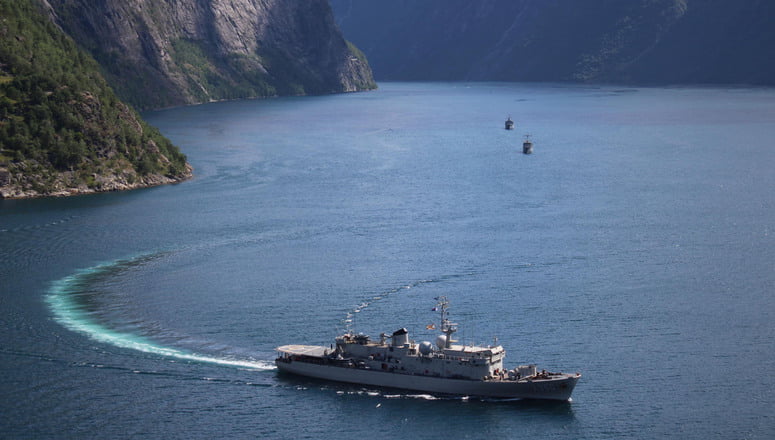One of NATO’s naval groups visited Trondheim on Friday (10 August 2018), and from there it will go on to search for sea mines dating back to World War II.
The operation will make the waters safer for fishermen and shipping in the area.
Standing NATO Mine Counter Measures Group One (SNMCMG1) currently consists of four ships from Belgium, Norway, Latvia and Lithuania.
During their port visit to Trondheim members of the public will be able to visit the ships to find out more about their work. After leaving Trondheim, SNMCMG1 will begin historical ordnance disposal operations along the Norwegian coast.
During this mission the group will search and identify sea mines and other dangerous ordnance left over from World War II.
All the data collected will be handed to the Norwegian authorities to improve maritime safety. This year the ships have carried out mine clearance operations off the coast of France, the United Kingdom and in the Baltic Sea.
NATO has four standing maritime groups which are made up of ships from various nations, a demonstration of Allied solidarity.
These vessels are permanently available to NATO to perform different tasks ranging from exercises to operations.
They also serve as an on-call maritime force as a part of NATO’s Spearhead Force – the Very High Readiness Joint Task Force.
In June and July, NATO’s major anti-submarine warfare exercise Dynamic Mongoose 2018 was held off the coast of Norway.
In October and November Norway will host Trident Juncture 2018, one of NATO’s largest military exercises in recent years. It will have more than 40,000 participants from more than 30 countries.
Credit: NATO
https://www.nato.int/cps/en/natohq/news_157640.htm
The featured photo shows BNS Godetia, with LVNS Rusins and LNS Kursis in background, crossing the Geiranger fjord.


